The intricate dance of urban life, with its ceaseless ebb and flow of people, presents a unique tableau for photographers. It’s in these pedestrian tides where the essence of a city truly lies. This blog post will explore the art of long exposure photography with a specific focus on capturing pedestrian motion. From embracing unpredictability to seeking contrast and defining the right location, this post will guide you through this fascinating technique that breathes life into still images.
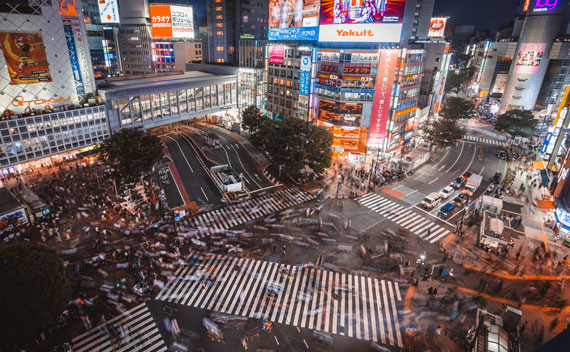
Photo of Shibuya Crossing captured by Denys Nevozhai
1. Variety is the Spice of Long Exposure
Navigating the unpredictable nature of human motion is a captivating challenge. To deal with this, cultivate a habit of diversity – experiment with various angles and shutter speeds. If you’re concerned about discomforting a person or a group, simply adjust your position and try a different perspective on the same scene. Pay attention to the different patterns that emerge from long exposures of human movement. To accurately depict motion from crowds, shutter speeds between 1-5 seconds usually work well. However, be cautious – shutter speeds longer than this could render people into a blurry, indistinguishable mass.
2. Embrace the Unexpected
In certain situations, you may desire people to move in front of your camera, adding dynamism to the scene. However, they may pause, unsure of your intention. In such scenarios, it’s perfectly acceptable to let them know that it’s okay to continue walking. Remember, this can happen especially in foreign locations due to cultural differences. Use this to your advantage and turn it into a unique photo opportunity.
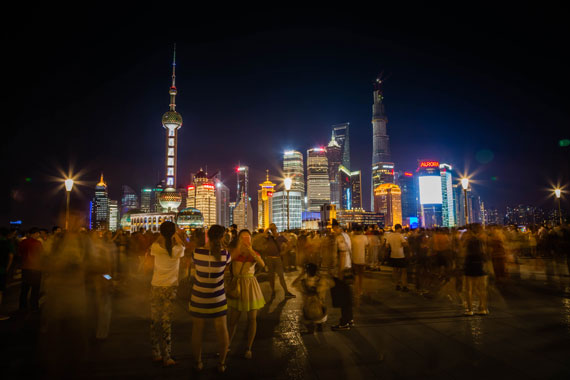
f/11, 3.2 seconds, ISO 500, 24mm
3. Pick Your Spot
Location is a key element in shaping the outcome of your long exposure shot. Aim for places that naturally attract large gatherings. Public squares, major intersections, city lookouts, building observatories, landmarks, street festivals, markets, and protests are all excellent choices. In major cities such as New York, Tokyo, or Toronto, four-way crosswalks can provide exciting opportunities to capture chaotic scenes of people against a backdrop of headlights and city lights.
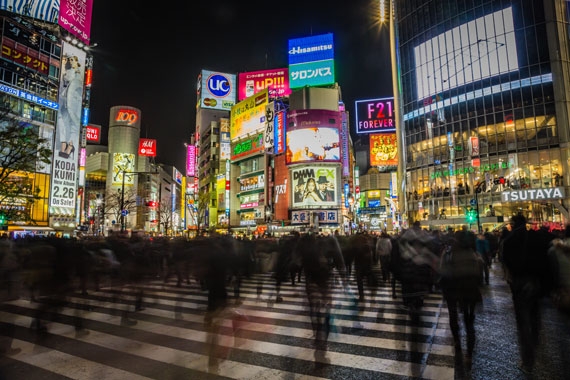
f/16, 1.3 seconds, ISO 250, 24mm
Here’s a list of places that can serve as excellent locations for capturing long exposure pedestrian photographs:
- Public Squares: Places like Times Square in New York, Piazza San Marco in Venice, or Trafalgar Square in London see a high footfall of people day and night.
- Major Intersections: The scramble crossing at Shibuya, Tokyo, or the intersection at Oxford Circus, London offer an abundance of dynamic movement.
- City Lookouts: Views from spots like the Griffith Observatory in Los Angeles or Mont Royal in Montreal can provide a great overview of pedestrian movement in the city.
- Building Observatories: Locations such as the Skydeck at Willis Tower, Chicago or the viewing platform at the Shard, London, provide bird’s-eye views of pedestrian traffic.
- Landmarks: The areas around popular landmarks like the Eiffel Tower in Paris or the Colosseum in Rome are bustling with locals and tourists, perfect for long exposure photography.
- Street Festivals: Events like the Mardi Gras in New Orleans or the Carnival in Rio De Janeiro can offer vibrant and colorful crowd movement.
- Markets: Bustling markets like the Grand Bazaar in Istanbul or the Camden Market in London are brimming with movement and activity.
- Train Stations: Major stations like Grand Central Terminal in New York or King’s Cross Station in London, with their constant stream of commuters, are excellent for capturing motion.
- Protests or Parades: Events like these often involve large crowds and can result in powerful imagery.
- Pedestrianized Streets: Areas like La Rambla in Barcelona or The Strip in Las Vegas that are specifically designed for foot traffic.
- Parks and Recreation Areas: Places like Central Park in New York or Hyde Park in London offer a mix of stationary and moving subjects.
- Beaches and Boardwalks: Locations like Venice Beach in California or Bondi Beach in Sydney present opportunities to capture a mix of static and dynamic elements.
4. Standing Still in a World of Motion
Combining motion and stillness creates powerful, evocative imagery. Landmarks and observation decks are perfect for this technique, providing opportunities to contrast an ever-moving crowd with a few static individuals. Try to find people who will remain relatively stationary – a busker, a person sitting on a park bench, or someone waiting for a bus. The result can be a poignant “world passing them by” effect, where they remain still and in focus while the world continues in blurred motion around them.
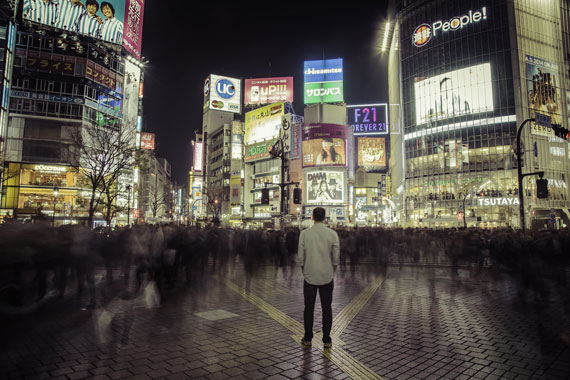
f/14, 6 seconds, ISO 160, 24mm
5. Composing the Perfect Shot
Composition plays a crucial role in long exposure photography. Always strive for a balanced shot. Position your static subject in a manner that complements the moving elements. Ensure they aren’t obscured by the motion blur but instead stand out in sharp relief. Remember, it’s not just about capturing motion but also about telling a story – use your composition to create a narrative that draws the viewer in. With practice, you’ll find a style that’s uniquely yours and be able to bring your vision to life.
In summary, long exposure photography is about capturing more than just a moment – it’s about capturing an experience, a slice of life. With the right techniques, you can transform the mundane into the extraordinary and truly capture the heartbeat of the city.
For Further Training, Summer Sale Ending Soon:
This #1 bestseller is the most in-depth eBook on how to capture amazing photography anywhere. Over 250 pages of photography tips & tricks from industry insiders. Currently 83% off today for a Summer Sale if you want to check it out.
It is the product of over a DECADE of research as an insider in the photography industry, assembled to help you learn quickly and avoid the mistakes that I made along the way.
Found here: The Photography Tutorial eBook Summer Sale
Like This Article?
Don't Miss The Next One!
Join over 100,000 photographers of all experience levels who receive our free photography tips and articles to stay current:
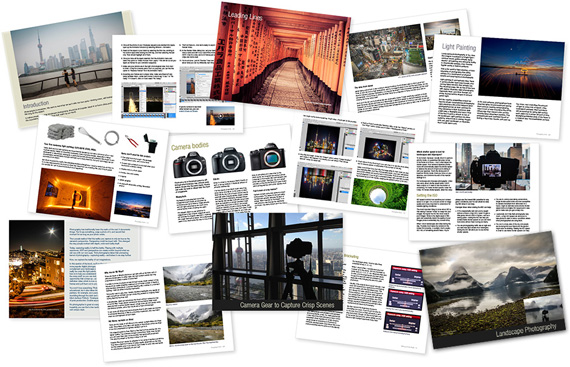






Leave a Reply